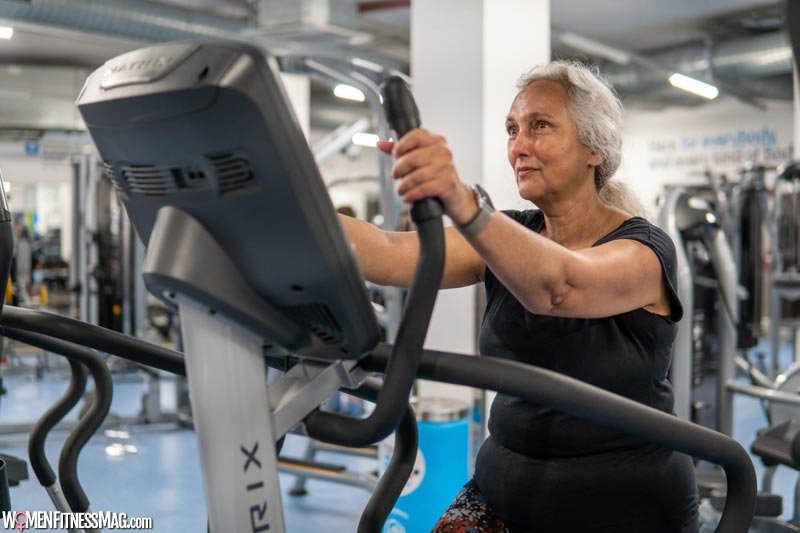Benefits of Exercises and Active Lifestyle for Elderly Women : While physical activity is crucial for maintaining general health and well-being, it is more important for aging adults. Even though exercises for senior adults have some concerns, the benefits of exercising largely outweigh the risks.
This explains why most senior living facilities, including Longhouse, have specially designed exercise routines for residents. Since seniors generally take longer to recover from injuries, moderate exercises benefit people of all ages. Aging women should maintain an active lifestyle for the following reasons:
- Improves senior health – The overall quality of health for seniors is better when they engage in exercise routines. Aging women who exercise reduce their risks of developing chronic illnesses. Physical activities also improve the digestive and immune systems.
- Improves bone health and strength – Physical activity helps improve and maintain bone health and strength in seniors. Exercising regularly helps bones become stronger and denser.
- Promotes heart and cardiovascular health – Exercising enhances cardiovascular health and reduces the risk of developing heart diseases. Combining cardio and strength training improves overall heart health. However, present underlying heart diseases and hereditary conditions won’t be relieved by exercise.
- Improves mental health – An active lifestyle has various mental health benefits. It helps fight mood disorders, specifically depression. It also slows the progression of Alzheimer’s disease and cognitive brain decline.
- Relieves osteoarthritis pain – While this might seem counterintuitive, exercising potentially relieves the pain and stiffness caused by arthritis. Low-impact strength training and ROM exercises can ease joint pain and inflammation.
- Promotes sleep – Most senior adults have a hard time getting quality rest. However, an active lifestyle helps them fall asleep. Regular aerobic exercises promote sleep by increasing core body temperature and enhancing rest when cooling down. Working out 3 hours before bedtime improves the quality of sleep.
- Reduces hypertension – Exercise has proven benefits in reducing high blood pressure in seniors with diagnosed blood pressure issues. Thirty minutes of aerobic activity every day significantly reduces blood pressure.
- Prevents falls – Strength training helps prevent falls among seniors. Falls are the main cause of injury among seniors with deteriorating bone strength and density. As mentioned, living an active lifestyle helps improve bone strength and density. It also helps seniors stay balanced.
- Helps manage body weight – Exercising helps in weight management for people of all ages. Metabolism naturally slows down with age. Strength training and cardio help develop muscle mass, which burns calories and increases metabolism, promoting weight loss.
- Improves social wellness – Most aging women and seniors generally struggle to keep their social life active. Aging adults can improve their social wellness by joining physical activity groups in senior living communities. This might be through walking groups, aerobics classes, and other social fitness clubs.
Which Exercises Are Best for Aging Women?
Aging women should combine aerobic exercises, strength training, and stretching exercises. High-intensity exercise programs are not safe and practical for seniors. Some of the best exercises for senior adults include:
- Aerobic exercises – Aerobic exercises help improve cardiovascular function, improves stamina, and strengthen the respiratory system. Safe aerobic exercises include walking, cycling, and swimming. Seniors should engage in aerobic exercises for 30 minutes daily.
- Yoga – Meditation and yoga are low-impact activities that don’t strain the joints. However, they help build muscles, stabilize the core, strengthen bones, and improve flexibility. Seated and standing yoga options are specifically designed for seniors.
- Strength training – Strength training for adults, isn’t about lifting 100 or more pounds. Seniors should try low-impact strength training exercises that can reverse muscle loss and burn calories. Beneficial strength training exercises include stair climbing, wall pushups, single-leg stands, and squats.
Is It Safe for Aging Women to Exercise?
Adults above 65 years, including those with mobility issues and chronic diseases, can safely engage in physical activities. However, they should consult a physician before starting an exercise regimen. Professionals can help in choosing the right exercise and activity level. That aside, seniors can exercise safely by:
- Staying hydrated – Drinking plenty of water or drinks with supplemental electrolytes helps seniors remain healthy when exercising.
- Listening to their body – While feeling out of breath or slightly flushed is normal when exercising; you should stop or slow down if you feel lightheaded or dizzy.
- Start gradually – You should ease into the exercise regimen slowly. You should adjust your exercises over time instead of diving in at once.
- Communicate – Seniors should inform someone what they are doing. If they want to go on a hike or walk, someone should know where they are headed and when they should be expected back.
Conclusion
Advancing age leads to decreased stamina and agility. While regaining youthful fitness is impossible, aging seniors, both men and women, can significantly benefit from moderate physical activity. Regular activity positively impacts their physical, mental, and emotional health and well-being. Exercising for seniors should be made a group activity. Doing it as a group provides an additional safety layer for aging adults who need more supervision.
Related Videos about Benefits of Exercises and Active Lifestyle for Elderly Women :
Benefits of Exercises and Active Lifestyle for Elderly Women
benefits of exercise on aging, benefits of exercise for the elderly pdf, exercise for seniors over 75, five reasons why it is important for an elderly to rest and exercise, how to assess physical activity and physical fitness in the elderly, social benefits of exercise for older adults, exercise for seniors over 70, psychological benefits of exercise for older adults,




